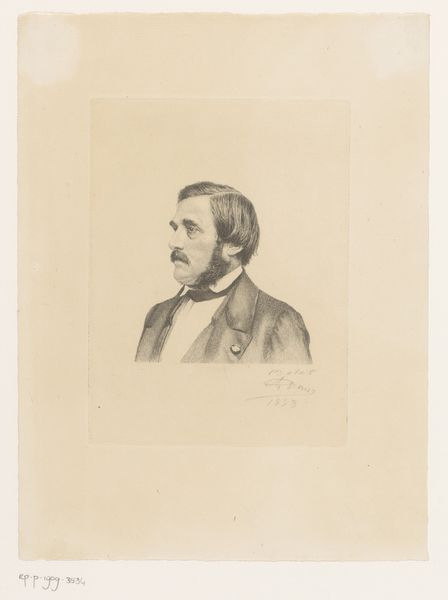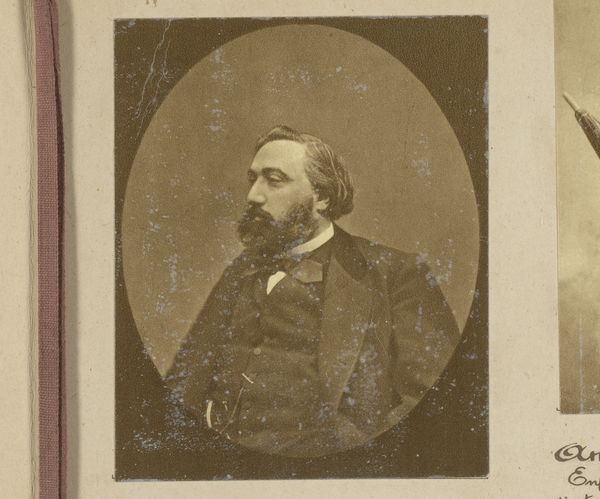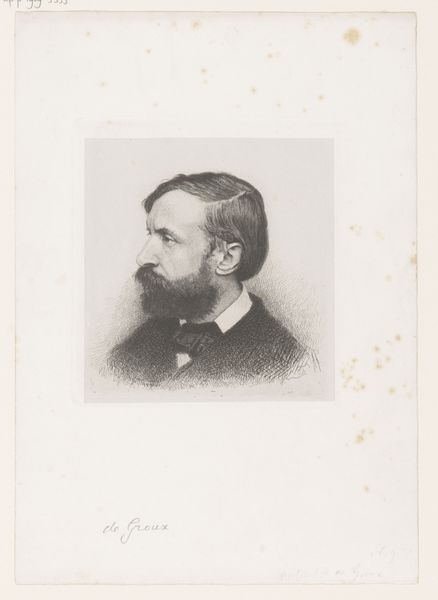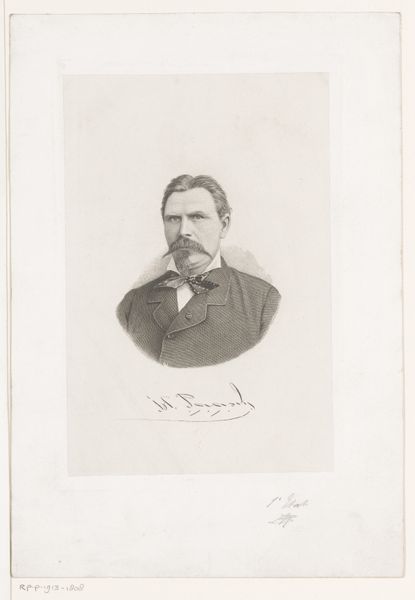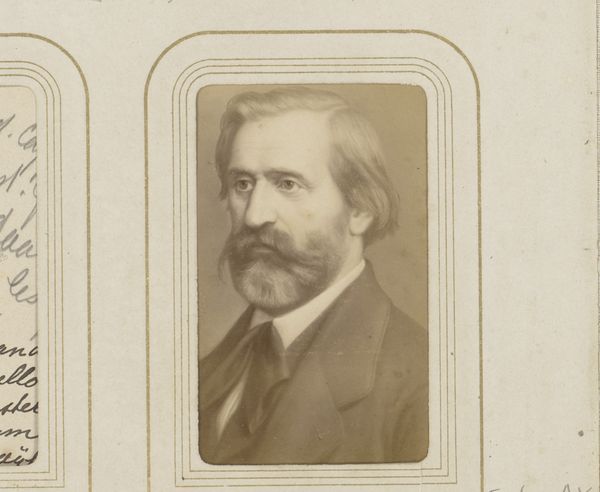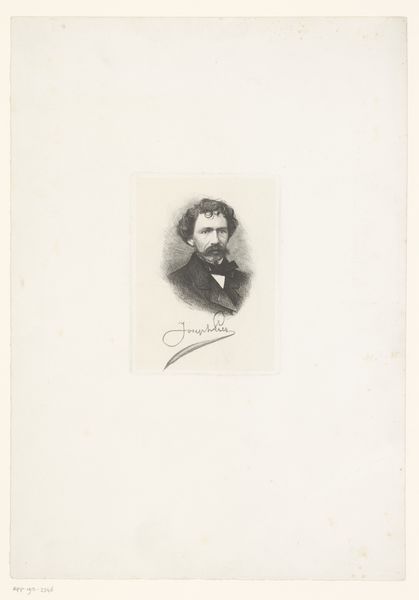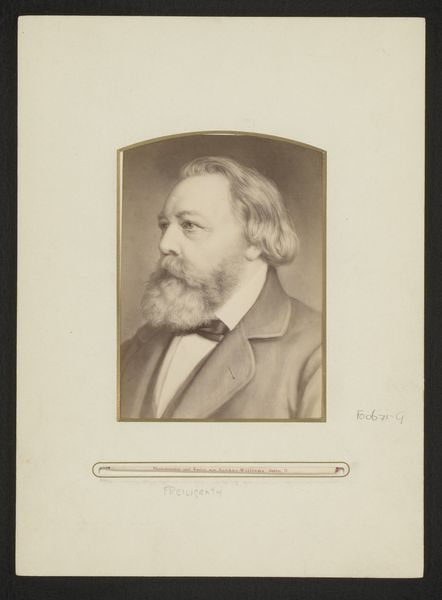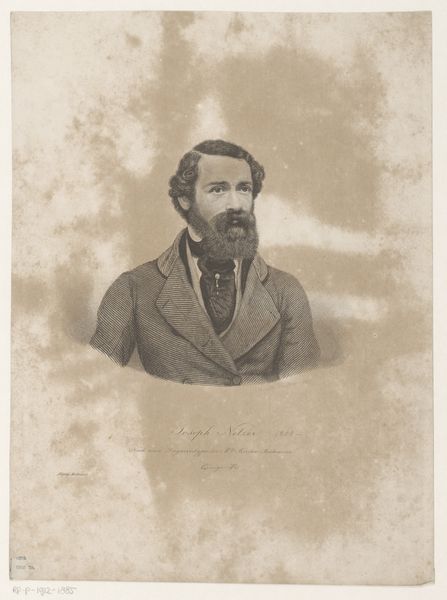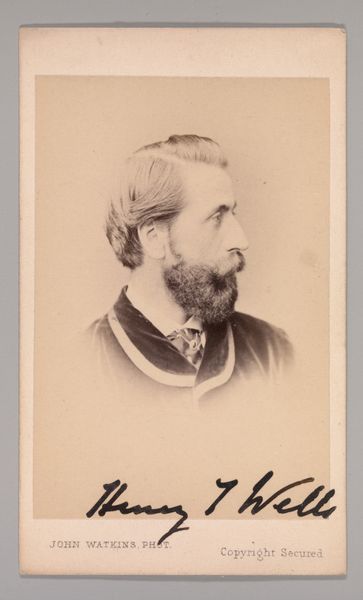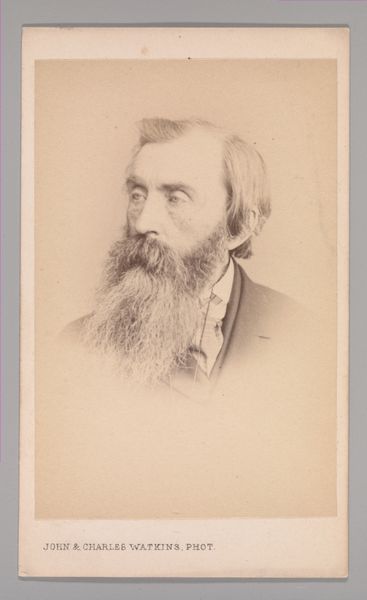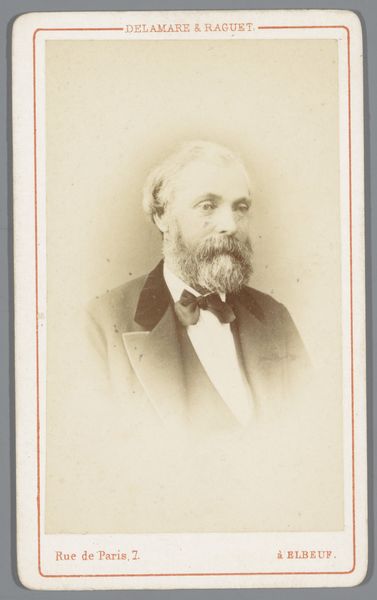
Fotoreproductie van een geschilderd portret van Giuseppe Verdi door Ernst Hader 1880
0:00
0:00
photography, albumen-print
#
portrait
#
caricature
#
photography
#
portrait reference
#
portrait art
#
albumen-print
#
realism
Dimensions: height 265 mm, width 192 mm
Copyright: Rijks Museum: Open Domain
Curator: Ernst Hader's 1880 albumen print, "Fotoreproductie van een geschilderd portret van Giuseppe Verdi," presents us with a compelling image. My initial reaction is drawn to the subject’s penetrating gaze, which conveys a sense of serious introspection. Editor: It’s certainly arresting. But I immediately think about the layered production here: a photograph *of* a painted portrait. I’m curious about why someone would go to the trouble. What did photographic reproduction offer that painting alone couldn't? Was this about wider distribution, cheaper production? Curator: That's a sharp observation. It speaks volumes about the growing role of photography in the late 19th century. The process of albumen printing, using paper coated with egg white and silver nitrate, offered a way to mass produce images from a negative, allowing Verdi’s image, initially captured in paint, to reach a much broader audience, far beyond the patrons of traditional portraiture. Think about the implications for Verdi's celebrity and the democratizing effect on visual culture. Editor: Exactly! And democratizing is an interesting term here, isn't it? Because even mass production of these kinds of prints relied on certain social and economic hierarchies, the means of accessing photography both to take them and possess them involved the resources and industrial machinery of its time, but the intent could be about the accessibility. Who owned the original portrait? Who commissioned this reproductive print? And who could then afford to own one themselves? How does access reinforce the existing power structures, or, alternatively, challenge them by increasing representation? Curator: Good points. Thinking about the visual weight of the piece—the somber tonality and sharp detail achieved through the albumen print technique give Verdi an almost austere presence. There's a powerful tension between the reproducible format and the very individual face depicted within that gilded oval. It also situates Verdi in the lineage of celebrated figures and in the tradition of painted portraits. Editor: It places him and removes him from reality simultaneously. And in that gesture it also reveals something crucial about photographic truth. Was it an intent, or an after-production choice that placed it in the oval shape? It's also intriguing that it presents not just a person, but someone considered a cultural hero, particularly during Italy's Risorgimento, an era of nation-building and political unification. How might this portrait have fueled or reflected his status and influenced ideas about Italian identity? The albumen print is thus not simply an image but an object deeply intertwined with cultural, political, and economic factors. Curator: That’s really valuable—you’ve brought out a range of interconnected layers here. I was initially focused on the image itself, but thinking about production and distribution makes the picture a lot more complex and dynamic. Editor: Yes, it's always about tracing the journey of the object, the making-of, the distribution, and the exchange that ultimately leads to new meanings.
Comments
No comments
Be the first to comment and join the conversation on the ultimate creative platform.
